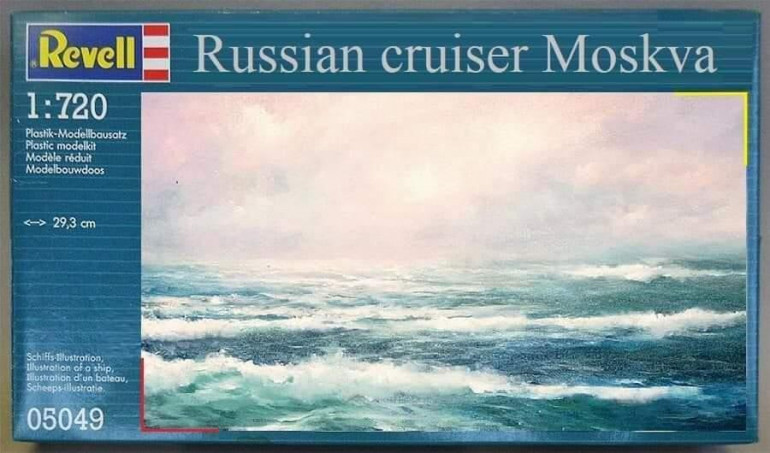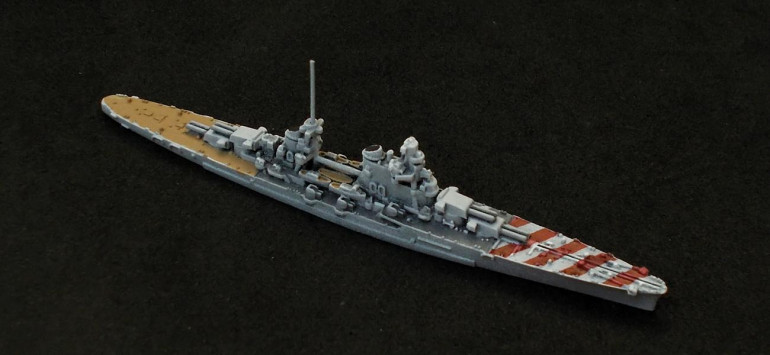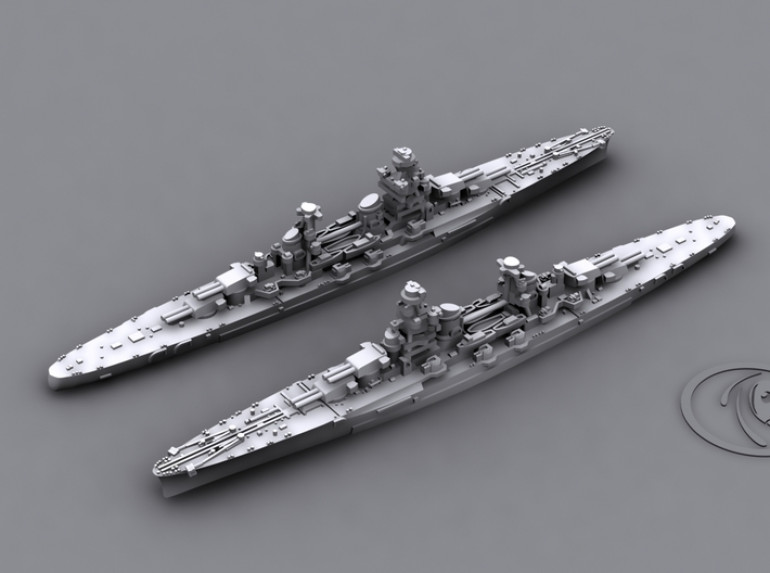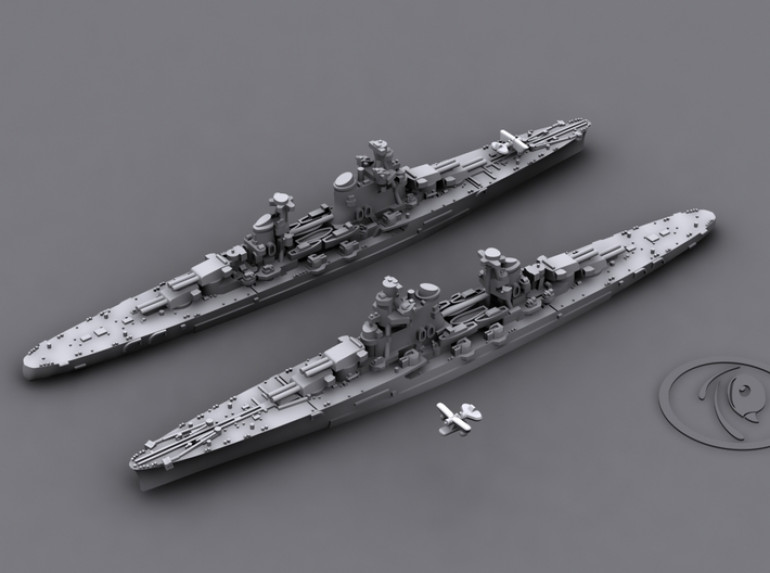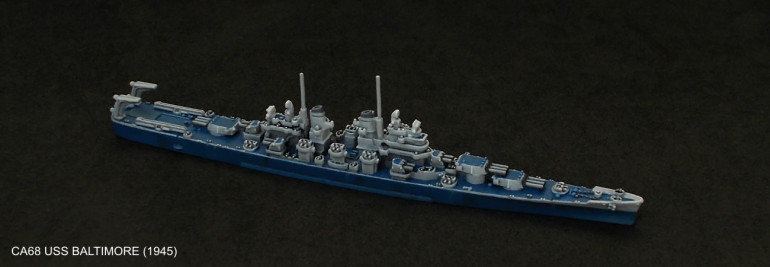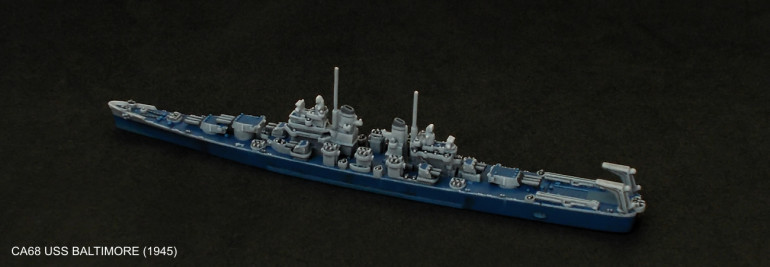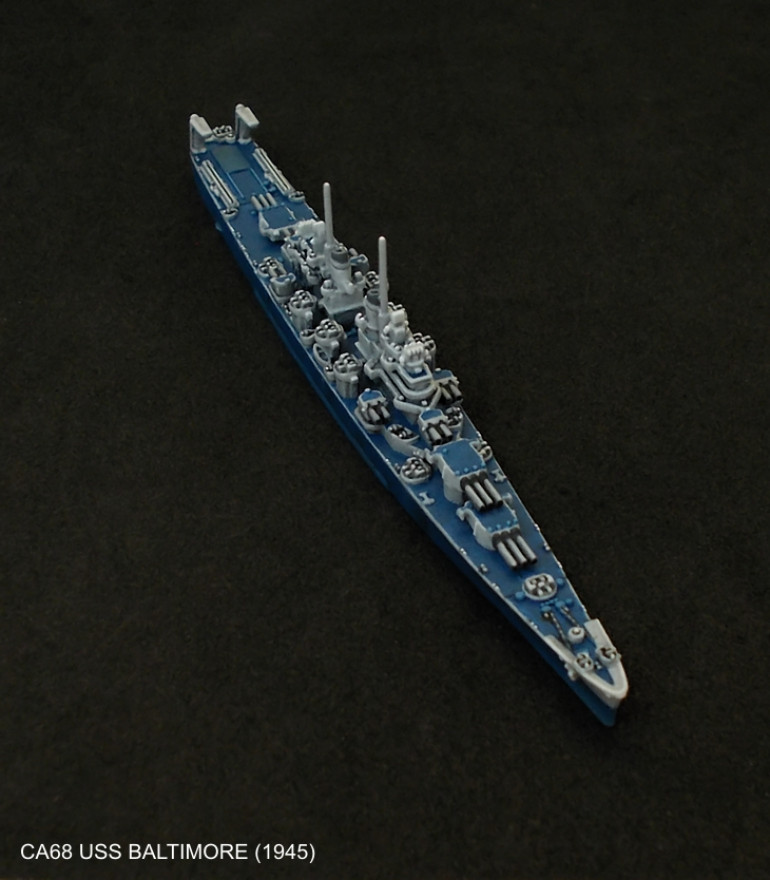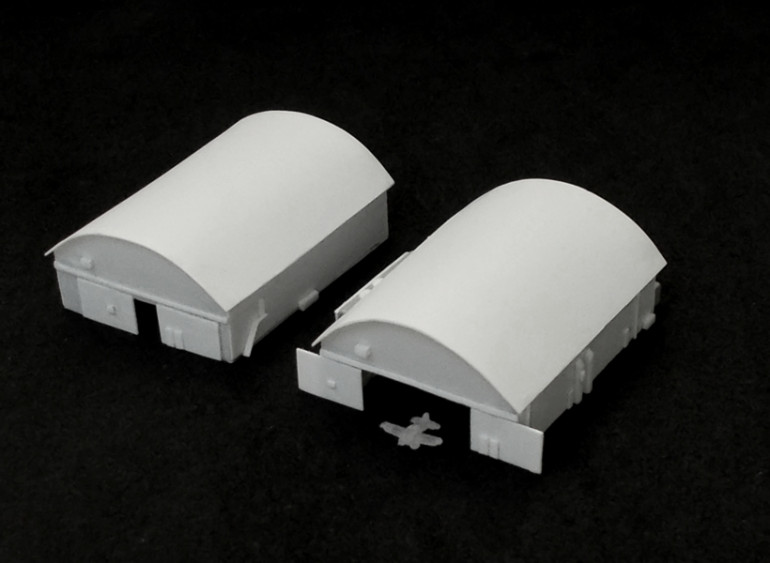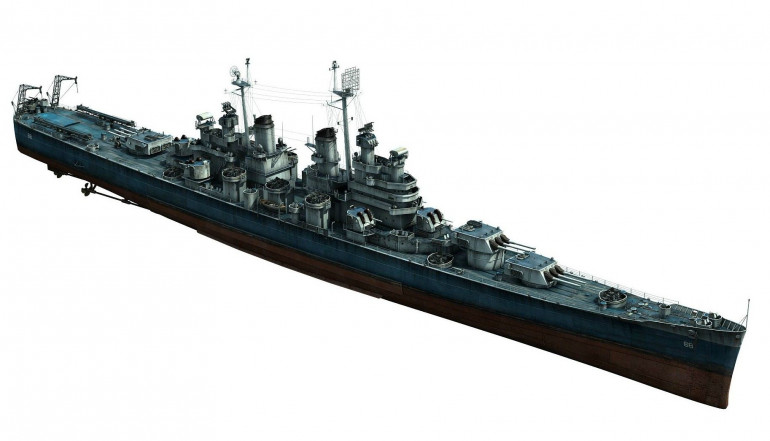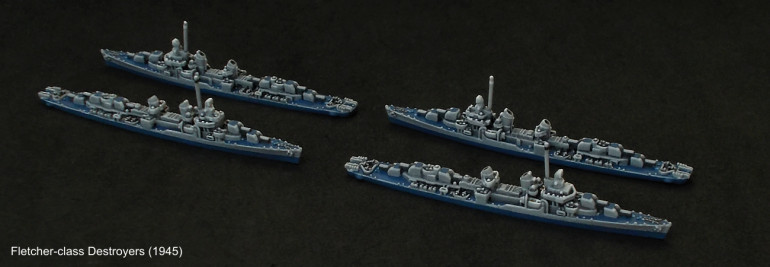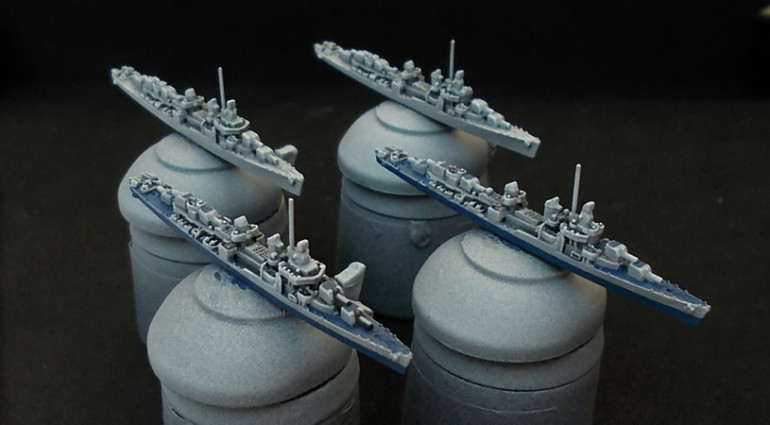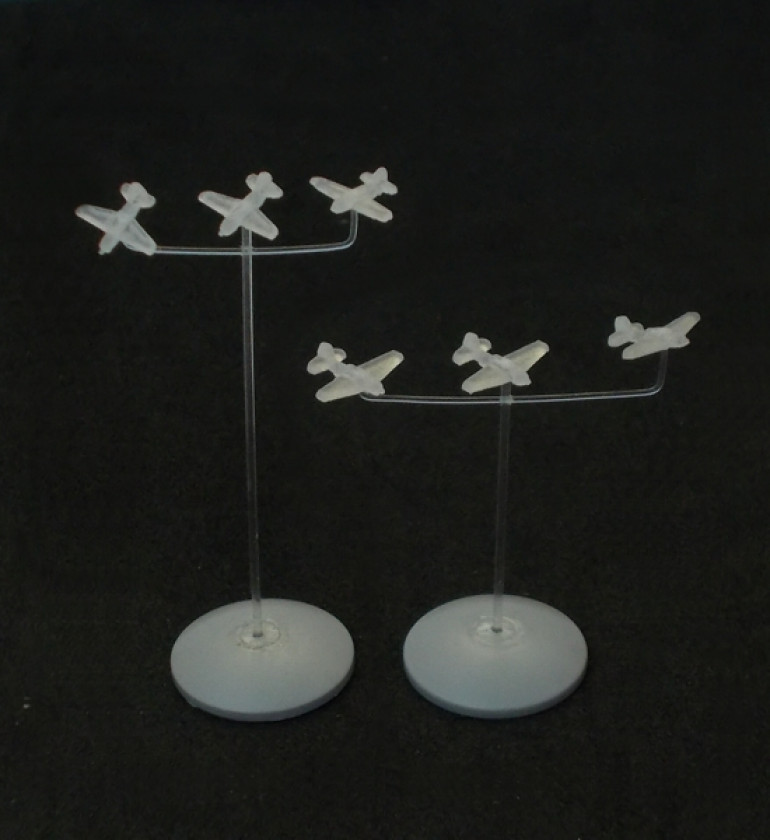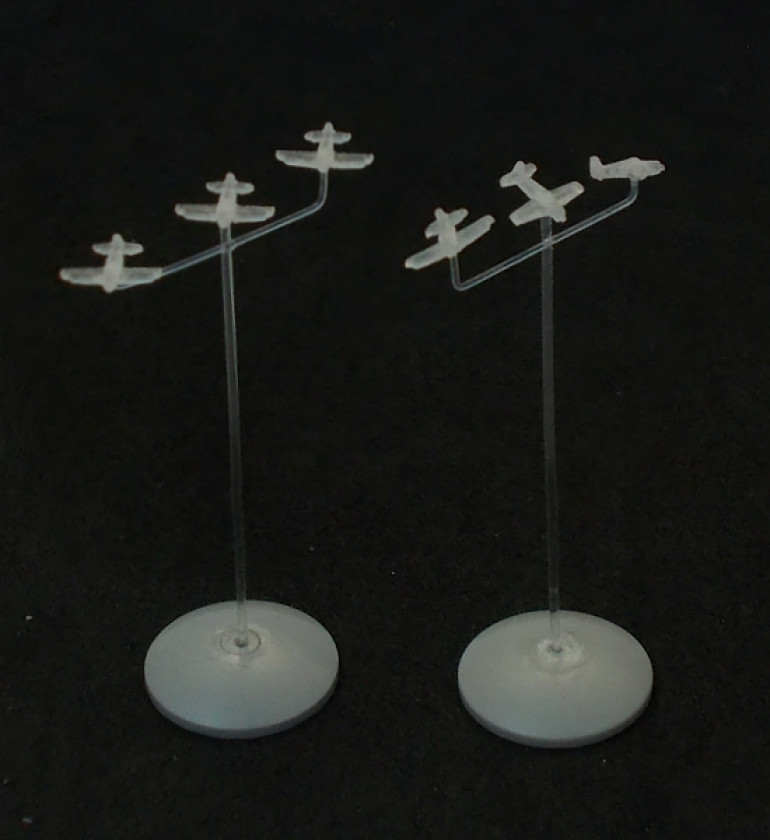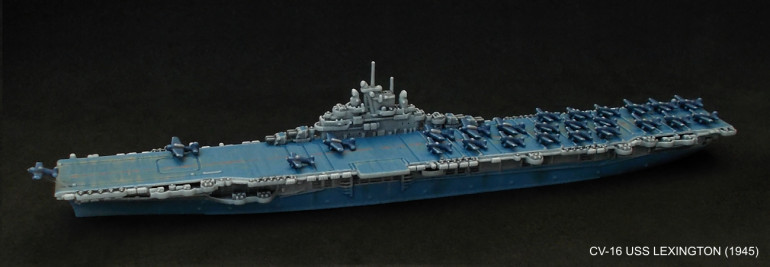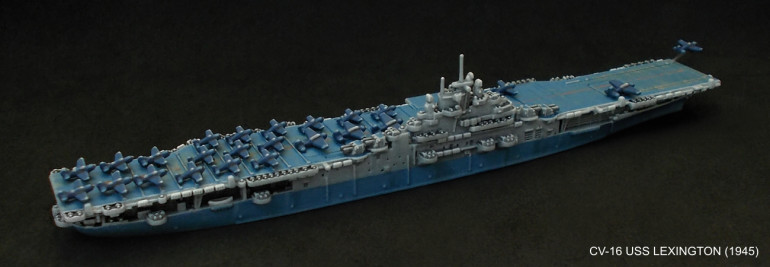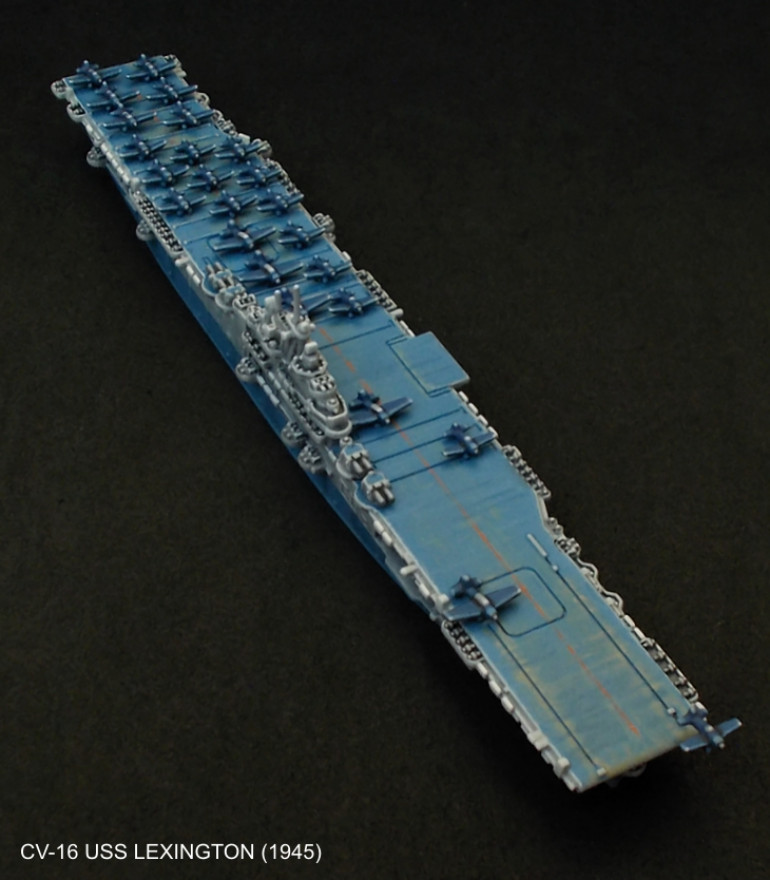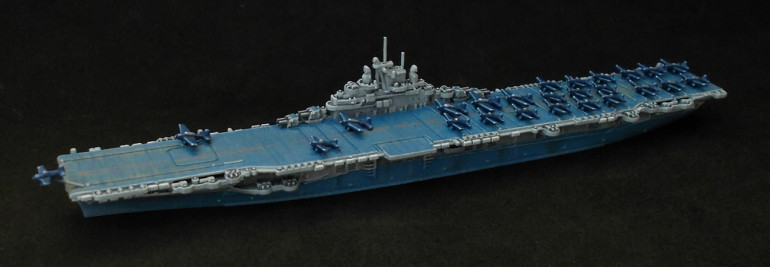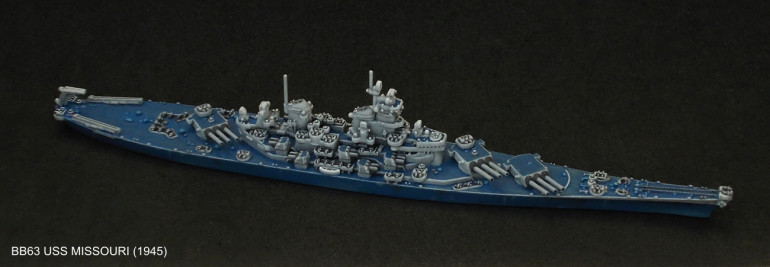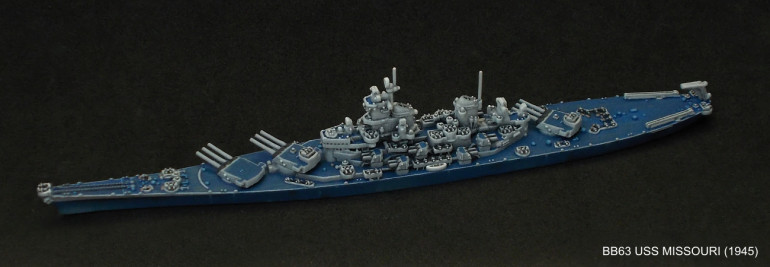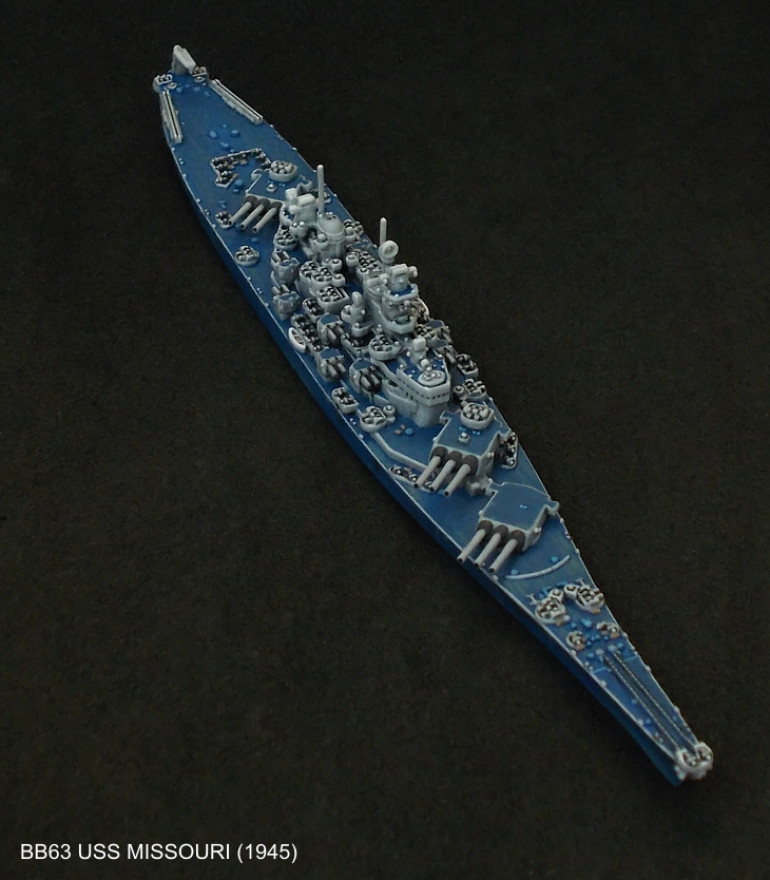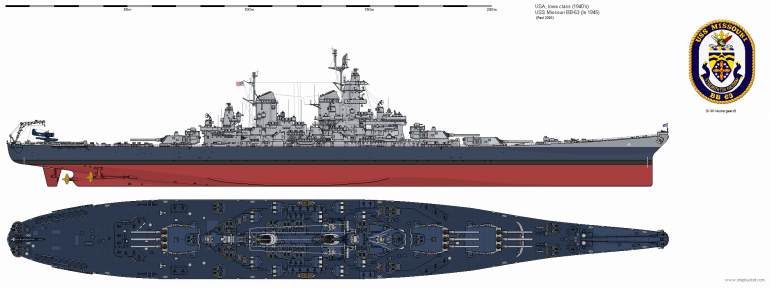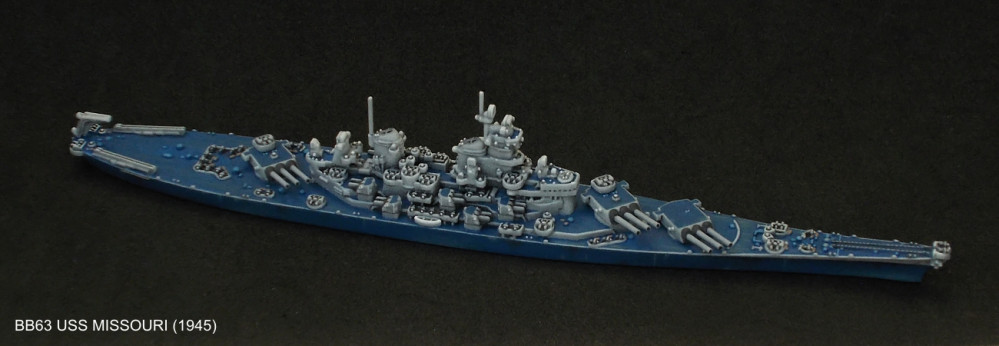
World War 2 at sea
Recommendations: 440
About the Project
Having an interest in naval warfare - especially during the Napoleonic Wars and in WW2 - it's time to start a historical project in earnest. Tanks and troops and artillery do not capture my imagination and interest too much, but ships and fighter planes do - I guess I'm fascinated by the cutting edge-technology these fighting vehicles always represent. I'm not tied to a specific game system, but for the moment I'll stick to Victory at Sea and 1/1800 scale. My focus at the moment is on collecting, assembling and painting some units. I will purchase all units so that I can provide all required gaming materials when someone wants to play. As for which nations I'll collect and paint - well, I'll start with the US pacific fleet, which I will play, and a friend of mine wants to play italians, so these will also follow, soon. The other usual suspects - British, Japanese and German - will surly also follow at some time.
Related Game: Victory At Sea (2020)
Related Genre: Historical
This Project is Active
Good News!
The special maritime operation of the missile cruiser Moskva in the Black Sea with the aim of converting the ship into a stationary submarine went on schedule and strictly according to plan on 15 April. With this operation, the world was shown that the Russian Navy is in no way inferior to the Russian land forces in terms of competence.
Russia has achieved its goal: It successfully occupied another piece of Ukrainian seabed.
But enough jokes about the Moskva. They all go way below the waterline.
Italian Heavy Cruisers
I’m currently focusing on painting minis for Star Wars Legion, but I’ve also started painting the first two italian ships – the heavy cruiser Pola and Zara. So here’s a little update of the painting process to keep my little naval WW2-project afloat:
Enter the Regia Marina
The last ship for the time being planned for my U.S. Navy is an Escort Carrier. Since I’m still pondering which one and looking for a model, I’ve ordered the first two ships for the italians a friend of mine wants to play.
The first two italian ships are two of the Zara-class heavy cruisers: The Zara, first ship of the class, and the Pola, last ship of the class with a slightly different superstructure architecture.
The ships of the Regia Marina were pretty modern ships with good guns, good optical range finders and fast speed, and originally designed to defeat the ships of the french navy. Their range was limited, but since they were intented to only operate in the Mediterranean, this was no issue and part of their concept. I read that the shells for their main batteries had some issues in that they had a deviation of up to 1000 metres at longer ranges, but this could also be a result of their guns being very close together, so that the shockwaves of the shells fired influenced each other’s trajectory. The issue with the shells never got addressed, since the manufacturer of them was a buddy of Mussolini – just goes to showcase one of the many flaws inherent in autocracies and dictatorships.
The two Zaras are ordered and supposed to arrive early next week, so stay tuned.
CA68 USS Baltimore (1945)
Last week, the Baltimore-class heavy cruiser USS Baltimore joined my fleet, I just didn’t find the time to post her.
In the interwar-period, the 2nd London Naval Treaty prohibited the construction of heavy cruisers. When the treaty became obsolete with the outbreak of war in 1939, the U.S. Navy immediately initiated studies which culminated in the conception and building of the Baltimore-class heavy cruisers, the first of which was commissioned in 1943. They proved to be an effective design and stayed in service long after the end of World War 2.
I present the first ship in the class, the USS Baltimore – like all ships in my U.S. Navy as she appeared in 1945.
Terrain for the Pacific Theatre
I’m still looking for a large gaming mat with a dark, oceanic water texture to my liking. Many are a bright blue and don’t much look like a deep ocean from above, but I’m confident I will find one.
This also got me thinking about some terrain. Good thing is: In the pacific theatre, many engagements took place in the vicinity (at least in nautical dimensions) of islands large and small, or were fought to gain or prohibit control and/or use of such locations.
The first island I plan to build will have an airfield with appropriate facilities, most likely used by the Japanese. So I’ve started scratch-building some detailed structures in 1/1800-scale – the first two being middle-sized hangars for housing and maintaining fighter planes and/or bombers. The one with the doors wide open is finished, the other one is a work in progress:
A Baltimore-class heavy cruiser is ordered and on its way
Here’s some visual reference for the Baltimore-class heavy cruiser I will paint next once the model is delivered to me:
Fleet in a Biscuit Tin
Here’s how I store and transport my fleet of tiny ships – as I do all my miniatures: The bases – or here the underside of the ships’ hulls – are all magnetized. I just put them in these neat little biscuit tins, and that’s it – they stay where they are, no other material required to protect them.
Fletcher-class Destroyers
I finished 4 Fletcher-class destroyers today. I marked each with a black or white stripe at the top of the mast so they are identifyable as individual ships with regards to book keeping during a game.
Details on 1/1800-scale ships
With the outstanding quality and amount of details on these tiny ships, it’s important to highlight them neatly and consistently. There are many elements you can find on each ship and ship class in the WW2 U.S. Navy, from radar, firecontrol systems and rangefinders, to the 5 inch dual purpose batteries, Bofors and Oerlikons small caliber AA guns.
This is the reason why I purchase all ships for a specific navy from one creator on Shapeways – to make sure that all these systems look consistent on all ships. I also make sure to paint and highlight all of them consistently, which often consists of lighty touching the fine tip of a good brush loaded with a small amount of dilluted color to the correct edges and tiny raised details, which thankfully is not as tedious as it may sound thanks to the sharply pronounced 3D-print.
Here’s a in image giving an impression of the detail work and progress on my Fletchers – the other two are in a similar state. I’m getting there…
Greyhounds of the Navy
Late last saturday, I received my 6 Fletcher-class destroyers – a lot earlier than I expected, but fitting considering that these ships could run at up to 38 knots, which is very fast for ships even today.
After installing the mast with the surface radar on each ship, I proceeded to priming and painting 4 of them with my method described earlier in this project. Here’s how far I’ve come so far – I will finishe these before this week’s weekend:
Air Units
With my Fleet Carrier finished, I need to create some air units to use in battle. For that I built my first four flight stands from scratch: The base is a small LEGO-dish with the stud removed. The vertical rod is .75mm fiberoptic cable, and the vertical arms are made using .5mm fiberoptic cable. I carefully drilled a .5mm notch into the .75mm fiberoptic into which I then glued the .5mm part.
I then prepared 3 aircraft miniatures for each stand from the collection I already used on the flight deck of the USS Lexington by drilling a tiny hole into the underside of each, which helped me with mounting the aircraft onto the flight stands using a tiny drop of superglue. Each stand has three aircraft of the same type to represent a squadron of that aircraft type.
To the left three Helldiver divebombers, moving to attack, and to the right three Avenger torpedo bombers coming in low, the one on the outer right has released its payload and is already pulling up:
Two squadrons of Hellcat fighters – the left flying in formation on patrol or looking for enemy surface units, and the one on the right breaking formation to engage enemy units in air combat:
I want to paint all of these next, because I want them to be finished until the six Fletcher-class destroyers arrive, which already have been shipped.
CV-16 USS Lexington (1945)
The USS Lexington is finished – the second U.S. Fleet Carrier of that name during WW2. She’s one of the short-bow Essex-class Fleet Carriers and was leading the fast carrier Task Force in the Pacific late in the war. Like my USS Missouri, the model depicts how the ship was outfitted and painted in 1945.
The model is actually the USS Intrepid, another short-bow Essex-class Fleet Carrier. From what I understood during my researches, no two Essex-class carriers looked exactly alike at any specific time during their service in the war. And this does not only include very obvious differences like different camouflage patterns, but especially how they each were outfitted – for example how many of each of the small-caliber AA guns were installed on a specific Essex-class carrier. Even their antenna and radar layouts were not exactly the same.
So, at this tiny scale – even though the models are insanely detailed – a short-bow hull and loads upon loads of Bofor and Oerlikon AA-guns combined with a Measure 12 camouflage scheme and sea blue aircraft in her airgroup make a pretty accurate CV-16 USS Lexington at that particular moment during her career:
Painting the USS Lexington (CV-16) and putting an air group on her...
Two days ago, I got my 3D-print of a super-detailed 1/1800-scale, short-bow Essex-class Fleet Carrier, as well as 220 late war US Navy-aircraft in the same scale.Before I primed and started painting the model, I had to do some prep work to make sure the teeny-tiny aircraft are positioned neatly on the flight deck. I drilled a tiny hole .5mm in diameter into the underside of each aircraft, and a corresponding hole into the flight deck. I then glued a short piece of .5mm fiberoptic cable into the hole in each aircraft. Since I’m crazy, I decided to put 25 aircraft on the flight deck, all of which I had to prepare… The aircraft are 14 Hellcat fighters, 5 Avenger torpedo bombers and 6 Helldiver dive bombers, all of which will wear their 1945 glossy sea-blue camouflage.With that done, I gave the ship a black undercoat and then gave it an even zenithal first with medium grey and then with white to get neat shadows and highlights for the major volumes of the ship. I did the same with the aircraft, which I painted seperately.
Next, I painted the lower half of the hull and the flight deck in a medium blue as per the Measure 12 camouflage scheme the USS Lexington (CV-16) wore in 1945. The flight deck also got a thin red line across the middle of its whole length, and I also weathered it along its vertical wood planking where the colour would be most likely to be worn off – at the front especially along the two steam-powered catapults where aircraft took off, as well at the back end where aircraft landed. After details on the deck were painted, I glued the painted aircraft into place and proceeded painting the rest of the ship. I wheathered the sides of the hull, and the rest was all detail work, only a little bit of which remains to be finished.
Here are two images of the work in progress – it’s almost done:
The Blue Ghost will be next - USS Lexington (CV-16)
The next ship model has been shipped yesterday and will arrive next week. It’s an Essex-class Fleet Carrier with short bow, and it will be the USS Lexington, the ship leading the US carrier fleet in the pacific later in the war. Also: The Lexington was at least once escorted by the USS Missouri.
I will paint the Lexington in Measure 12, which she wore 1945 and which was a less contrasty predecessor of Measure 22. The lower half of her hull above the waterline will be a mid-blue, as will be all horizontal surfaces including her flight deck. All other vertical surfaces will be a mid-blueish grey. I will add antennae and radar which is missing on the tiny 3D-printed model due to them being too fragile, as I did on my Missouri.
I also purchased a set of 220 US Navy-aircraft of different types which will arrive with the Essex-class Carrier. These will be painted with Sea Blue according to their late war-colour scheme. I will add a lot of planes to the flight deck – a whole bunch of them with their wings folded on the rear third of the flight deck, being ready to launch, and in front of that a few with their wings assembled ready to launch, and one aircraft which is currently starting or just about to leave the flight deck. I want the carrier to look busy and ready for combat.
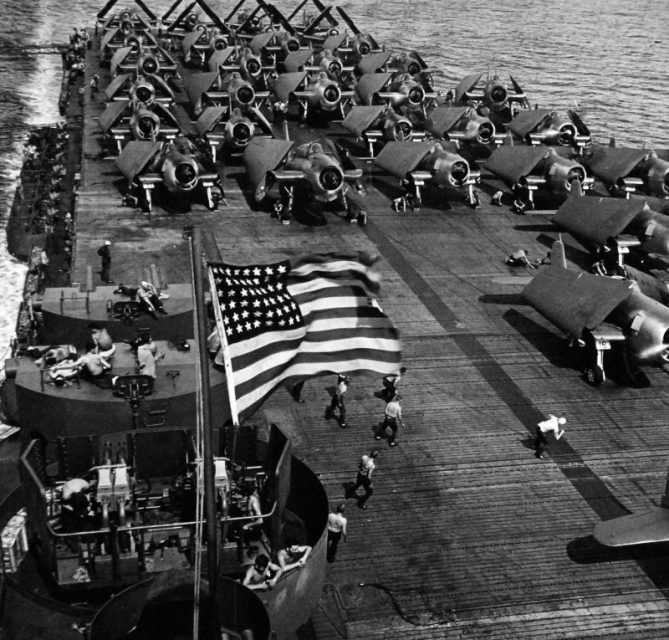
BB63 USS Missouri (1945)
To get a feel for the scale and set the bar for other units, I decided to start with the most complex and difficult to paint type of unit – a battleship. Reduced to a secondary role in WW2, but still impressive, and often serving as flagships.
I decided on an Iowa-class battleship and of the four, on the USS Missouri as she appeared in her second year of service in 1945.
Now let me be honest: The ship models in Victory at Sea are okay – they are perfectly fine for a game. But I’m a stickler for accuracy and detail, so I will use 1/1800-scale ships I purchase from Shapeways. It’s more expensive, but there are some creators who provide astoundingly accurate and detailed models at that scale.
The model of the USS Missouri in 1945 I purchased is excellent – I added the top antenna portions on the two masts and exchanged the 9 guns of the main battery with thinner ones which look much more accurate. Both the new guns as well as the antenna I made using fiberoptic cable. The round radar I created from plastic card.
I painted the model in the camouflage pattern the Missouri wore in 1945 – it is called Measure 22.
And here’s my finished model – it is approximately 15cm long:































![TerrainFest 2024 Begins! Build Terrain With OnTableTop & Win A £300 Prize! [Extended!]](https://images.beastsofwar.com/2024/10/TerrainFEST-2024-Social-Media-Post-Square-225-127.jpg)









